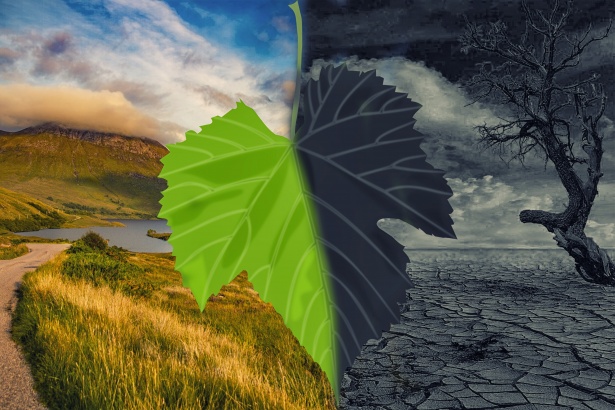WHO/Europe urges Member States to consign cervical cancer to history, at the 72nd Regional Committee for Europe in Tel Aviv, Israel
Each year in the WHO European Region more than 66 000 women are newly diagnosed with cervical cancer and more than 30 000 die from this preventable disease. Cervical cancer is a difficult disease with traumatizing effects, which mostly impacts women aged 45–60, but also younger women.
Across the Region, the proportion of invasive cervical cancer cases detected at an early stage varies considerably from 35% to over 80% depending on the country. Five-year survival rates range from 54% to 80%. On 13 September, at its annual Regional Committee meeting in Tel Aviv, WHO/Europe will ask its 53 Member States, from across Europe and Central Asia, to endorse a roadmap to accelerate the elimination of cervical cancer as a public health problem in the Region.
Read also
“As a gynaecologist who has treated women with cervical cancer, I have witnessed the fear people experience of a cancer growing in one’s body. Yet cervical cancer is preventable. No woman should die from it,” said Dr Nino Berdzuli, Director of Country Health Programmes at WHO/Europe. “A cervical cancer free future is within our grasp. This is a momentous opportunity for political and health leaders to achieve cervical cancer elimination. We have the knowledge and tools, but we need stronger and more consistent commitments to make elimination possible across our region. We must end the inequalities between and within countries in mortality, vaccination and screening. Through equitable delivery of the human papillomavirus (HPV) vaccine, national organized screening programmes and quality treatment, we can prevent and treat cervical cancer.”
The vaccine
The HPV vaccine prevents cervical cancer by protecting against the most common types of HPV, which cause 9 out of 10 cervical cancer cases. HPV vaccination is recommended at 9–14 years. Recent studies from the United Kingdom, one of the first countries to introduce it, show that HPV vaccination reduced pre-cancerous lesions and cervical cancer by almost 90% among the first cohorts who received the vaccine. Sweden predicts that cervical cancer could be eliminated in that country 5 years from now, meaning they would see less than 4 new cases per 100 000 women each year.
In April 2022, WHO’s Strategic Advisory Group of Experts on Immunization announced, based on a review of the evidence, that a single-dose HPV vaccine delivers protection against the virus that is comparable to a 2-dose schedule and that countries can choose to use a 2-dose or 1-dose HPV schedule. Countries need to reach 90% national vaccination coverage by 2030 to be on track to meet the elimination goal. The most effective way to reach this target is to include HPV vaccination in national immunization programmes and invest in effective communication strategies.
National organized screening programmes
The second important tool for cervical cancer elimination is a national organized screening programme, which ensures that all the necessary services are provided – from early detection and diagnosis, through to treatment and follow-up care. Effective cervical cancer screening is not just a test or a single event, it is a pathway.
“HPV vaccination and national screening programmes combined with strong awareness and community engagement campaigns, proper health workforce capacity training, and innovation to produce local solutions to local challenges are our means to cervical cancer elimination,” said Dr Berdzuli. “HPV vaccination and cervical cancer screening have been designated as ‘best-buy interventions’ with immediate returns on investment. They significantly reduce avoidable illness and death as well as the need for expensive treatments which have serious health side effects.”
The ambition
The “Roadmap to accelerate the elimination of cervical cancer as a public health problem in the WHO European Region 2022–2030” outlines core principles, strategic shifts and priority actions to guide Member States in reaching the 2030 targets – the “90-70-90 targets” – set by the Global Strategy for Cervical Cancer Elimination:
- 90% of girls fully vaccinated with the HPV vaccine by age 15
- 70% of women screened using a high-performance test by age 35, and again by age 45
- 90% of women identified with cervical disease receive treatment (90% of women with precancer treated, and 90% of women with invasive cancer managed).
Achieving these targets requires strong political commitment from Member States and appropriate investment in care pathways, workforce training, communications and monitoring.
From Sweden to Uzbekistan – learning from successes
Some countries in the European Region are already well advanced on the road to elimination. Others are just embarking on this important journey. Countries that have achieved real success include the United Kingdom, one of the early adopters; Sweden, where women have the option to collect their own samples via self-sampling as part of an organized screening programme; and Uzbekistan, with its high vaccination rates. The experiences of these countries may help others to understand and address barriers in their countries to the delivery and uptake of HPV vaccination, cervical cancer screening, cancer treatment and palliative care.
The route to addressing HPV may vary based on country contexts and resources, but the destination is the same – eliminating cervical cancer. Policy-makers should seize this momentous opportunity to eliminate a cancer which needlessly kills and destroys the health of women in the prime of their lives. The effects are devastating not only on the individual women but on the whole of society – families lose daughters, mothers and wives, and communities are impacted by these early deaths. By striving to achieve the ambitious 90-70-90 global targets by 2030, all countries in the Region are setting themselves on a pathway to eliminating cervical cancer as a public health problem.





























































